The Most Overrated Player in the World
I promise I don't hate him
In 2024, HLTV produced what might have been their most contentious top 20 ever, at least in recent memory (although it was probably one of their best in my opinion). However, the thing I believe they got the *most* wrong, was a placement that was criticized by few and far between, and that will be the topic of this article.
Without beating around the bush, I do not believe flameZ was the 7th best player in the world last year. Not just that, but I also do not believe he belonged in the top 20 at all. To argue my point we’ll be comparing different statistics, looking under the hood at his rating and reexamining and rethinking the game and individual ratings on a fundamental level.
Initially when people started making their top 20 lists for 2024, I was a little shocked by how highly placed flameZ was on a lot of lists. For instance, even before HLTV published their top 20, launders and Mauisnake placed flameZ 7th and 6th on their respective lists. On the other hand, I didn’t see the same thing.
However when looking at his HLTV Rating, it makes sense why people rate him so highly. Over the year at big events, he averaged a 1.10 rating over 115 maps played. To add to that too, his rating didn’t fall off against tougher opposition either. He was extremely consistent against all levels of opposition, with a 1.10 rating against Top 5, 1.08 against Top 10, and 1.11 against Top 20.
That isn’t to say I entirely discredit the eye test. The entire reason I’m writing this is because my personal perception didn’t align with others, and the way you shed personal biases to come to a shared understanding is with statistics.
But what happens when the stats disagree? Because while HLTV Rating does rate flameZ pretty highly, other stats don’t. Take for instance, RWAA. Earlier last year I wrote an article where I fully outlined what RWAA is and how it’s calculated, so I encourage you to go back and read it if you haven’t seen it.
In short though, it’s a measure that uses the win rates of multikills to see how many rounds more than the average player you would expect a player to win in a context neutral environment. It’s also cumulative, which means how much you play also matters. A player that plays a few maps isn’t going to be ranked higher than a player who is consistently good over a longer period of time.
I made a leaderboard with two different filters. One is just Big Events in general, and one is LAN Top 20, all stats are from the 2024 calendar year.
It’s far from perfect but for a ballpark estimate it’s alright.
Now you might have noticed that flameZ doesn’t appear on either list. So, where is he? Well, on the Big Event leaderboard he ranks 45th and on the LAN Top 20 leaderboard he ranks 31st. If you doubled his RWAA with both filters, he still would not be top 20 on either list.
But okay, RWAA is just a stat I made up and is hardly foolproof. The best competitor to HLTV rating right now is Leetify rating. So what does Leetify say about flameZ?
Well, it tells a similar story. Using the numbers published by Leetify in their late November blog combined with the stats from the major, we can compare the Top 30 players posted by HLTV and see their ratings at big events. Note that these stats do NOT include IEM Rio and BLAST World Final (although that’s doing flameZ more favor than harm).
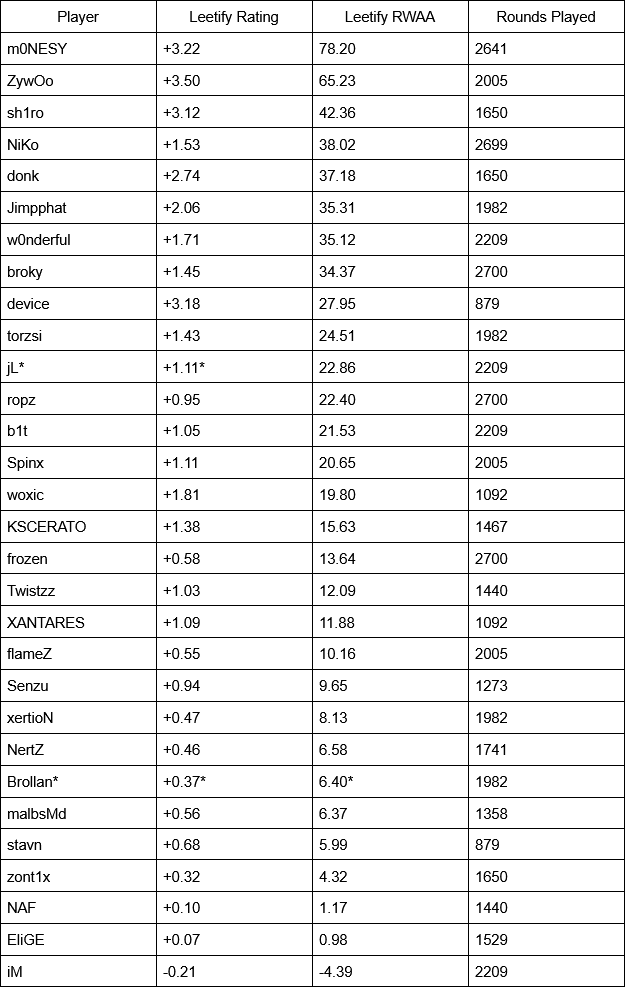
In terms of rating, flameZ ranks 23rd and in terms of Leetify RWAA he’s 20th. To be fair to HLTV, in terms of HLTV Rating flameZ is tied for 19th among that same list when looking at Big Events, but what’s notable is that the gap between him and 7th (where he placed) is only 0.04, and with how many rounds he played, there’s still a pretty good argument when using HLTV’s idea of value that cumulatively he was much higher than 20th, hence his top 10 placing.
However I want to make this abundantly clear. In the same way I am not saying to take HLTV Rating at face value, I do not think Leetify rating should be taken at face value. The point of comparing the two is to examine the discrepancies to potentially explain the differences and to see if one is more “valid”.
To do that we’ll have to do a deeper dive into both ratings, look at how both are calculated, and see if there are any problems with these evaluatory metrics.
Before I start criticizing though, I feel like I need to define how I imagine individual rating systems *should* be for the purposes of player comparison. In my opinion, individual ratings should aim to measure the value of an individual’s contribution. This definition is important for a few reasons.
The first aspect of the definition is “value”. I’ve gone at lengths to explain how I think value should be derived from round wins, because that is ultimately how you win a game of Counter Strike. Kills don’t win games, economy doesn’t win games, rounds win games, so my idea of value in Counter Strike is tied to round wins.
The second aspect is “individual”. When evaluating individuals, it’s important to be able to isolate variables so that all players are treated on as level a playing field as possible. While this aspect will never be perfect, because not all teams are created equal, there are currently aspects of rating systems directly tied to team success that I take issue with.
The third aspect is “contribution”. That is to say, you should actually need to *do* something to “gain” a rating. This might be the most confusing aspect of the definition, but I hope when I explain my qualms later on it makes more sense.
So with a fully fleshed out definition we can start examining the ratings through this lens.
Leetify Rating
We’ll start with Leetify rating. Up to this point I haven’t really explained how Leetify rating works. I recommend reading the blogpost on Leetify’s site for a full explanation but in short, it’s a rating that dynamically values every kill/death/assist/etc. Based on its change in round win probability. Specifically it weighs kills based on:
How many players are alive in the round
The economy of both teams
Which side got the previous kill
Then these kills are split in the following ways:
Kill 35%
Damage 30%
Traded Death 20%
Flash Assist 20%
In all, here are the ways to gain rating:
Getting a kill
Damage that turns into an assist
Flash assists
A traded death
Saving your weapon
Winning the round either by defusing or the bomb exploding
And all the ways to lose rating:
Dying
Losing the round by letting the opponents defuse or time expire
Not hunting down saving players
If we evaluate these individual aspects, we can see if they fit the three aspects of our definition (value, individual, contribution). Kills definitely fit all three criteria, as does damage. However, assists and trading do not, and we’ll touch on that point more when we examine HLTV Rating.
Furthermore, saving does not meet the criteria. Now this doesn’t matter for flameZ because he saves roughly an average amount overall and a below average amount compared to the previously referenced top 30 (23rd), but it’s still worth touching on what I think is the biggest flaw of Leetify rating.
Saving does not have any inherent value. In terms of winning the game, saving is by definition the exact opposite, it’s forfeiting the round to maintain weaponry.
But, I hear you say, surely maintaining weaponry for the next round has value in and of itself? Well what if you don’t do anything with it, what’s the value in having the weapon? Sure, saving gives you greater *potential* to add value, but you need to actually do something (i.e. get a kill) for that potential to be realized.
Think about it, given no other information, if you’re on CT side in a 5v5 and your team gets the first kill, what’s the difference between that kill being from a deagle and being from an AWP. Extend that to every situation, and you realize kills aren’t really more valuable depending on the gun you get them with. What the weapon changes in these situations is the ease in which you can accrue value, but the value doesn’t come automatically from the gun you’re using.
Also let’s be honest with ourselves, there’s no skill in saving. If you save a lot, that doesn’t automatically make you a better player than other players that don’t save. While saving is losing, saving is also a lack of contribution. Anybody can save a weapon, and how much someone saves doesn’t make them a more winningest player.
After saving, the other aspects of Leetify rating make sense and line up with our initial criteria, other than punishment for not killing saving players but we already went over that whole spiel.
Other than that qualm, Leetify Rating is pretty good. Saving is ultimately a minor part of the rating and the fact it dynamically values kills depending on the round-state means it’s much closer to capturing the “true” value of a kill rather than HLTV Rating.
And speaking of HLTV Rating, it’s about time we get to discussing it.
HLTV Rating
HLTV Rating is a little less transparent with how it’s calculated compared to Leetify, but we at least have a spiffy graphic to work with.
These five “sub-ratings” encapsulate HLTV Rating 2.1 and previously 2.0 as well. Along with HLTV’s own Rating adjustments in the latter part of last year, they outlined their own changes to their rating formula:
2.1 Uses CS2 data rather than CS:GO data
Average rating returns to 1.00 over an event (previously ~1.06)
All five sub-ratings have equal weight
Saving gives a lower reward
Assisted kills give more reward
These adjustments don’t change much, but decreasing the bonus that saving gives to rating is good, as stated previously.
However, there are a lot of aspects that either aren’t good for an individual rating or are overrated. The two biggest things I take issue with are “KAST Rating” and “Impact Rating”.
The Problems with KAST
If you don’t know what KAST is, let me explain. KAST is a pretty simple stat, all it does is check whether in a round a player gets either a kill, assist, survives, or traded. A stipulation for HLTV Rating is that for a round to count as “survived” in, a player’s team must also win the round. Aside from that, as long as you do one of those things, you get a KAST “point” for that round.
KAST is also known as “Rounds Contributed”, and honestly it’s a pretty decent stat… if you use it right. The problem is that KAST, for purposes of individual evaluation, is fundamentally flawed, because KAST is not an individual stat. To highlight that, let’s examine each aspect of KAST.
Kills are an individual stat, there’s nothing to cover here.
Assists on the other hand, are not. Let’s think about what an assist is and what needs to happen for you to get an assist. Firstly, you need to do a certain amount of damage to an opponent. Then, your teammate needs to kill whoever you damaged. As you can see, without your teammate you aren’t getting an assist. This is effectively rewarding one players’ rating based on another players’ performance.
The same is true for surviving with the 2.1 update, because now you get a survival point for winning the round but only if you win the round. That means in a round where you have no other “contribution” aside from surviving, you’re solely reliant on your teammates winning the round for that KAST point.
And this applies to trading as well. To be traded, you have to die and one of your teammates has to kill the person who killed you within 5 seconds. Which is to say that, again, being traded fundamentally relies on your teammates for you to get credit, which goes against the “individual” part of our definition from earlier
Now if our idea of an individual rating is an individual’s contribution, it’s hard to justify having a stat that relies so much on your teammates. Because again, if we want to examine individuals, we need to isolate variables.
Well, why is isolating variables important? Well, the crux of the issue is that two players can do completely identical actions but be rewarded differently based on what their teammates do. We can show this with a hypothetical:
SITUATION 1
Let’s say we have two different matches with two different players. It's a pistol round on Ancient and they’re playing on the T side. Player A runs out mid, gooshes a CT for 89 damage but dies to that same player by a USP headshot making it a 4v5. However, Player A’s teammate kills the opponent that Player A gooshed within 5 seconds of them dying. In this scenario, Player A gets credit for doing 89 damage, getting an assist for his teammate killing the guy he gooshed, and credit for getting traded.
SITUATION 2
Player B on the other hand plays with some bums. They do the exact same entry route on Ancient pistol round as Player A. They go out mid, goosh the CT for 89 damage, then die to that same CT, making it a 4v5. Then the rest of Player B’s team, all of them blind deaf mutes that play with peg-arms, proceed to get mercilessly gunned down and sent to Counter Strike heaven. In this scenario, Player B is rewarded only for doing the damage and nothing else.
And herein the issue lies. Why, in an individual rating, should two players be rewarded differently when they do the exact same thing? Note that these are issues present in both HLTV Rating and Leetify rating to a lesser degree. However you could argue that flameZ is unique in how he is rewarded compared to other players.
Examining the same 2024 HLTV Top 30 reveals something interesting about flameZ’s KAST. In terms of LAN Top 20 in 2024, flameZ was the 9th best player by KAST at 75.00% and is a hair below 8th and 7th, Spinx and broky, who were both 75.10% and 6th, donk, who was at 75.20%.
However, if we look at the rounds where a player’s KAST was directly reliant on their teammates, or in other words rounds where they only got an assist, survived (in a won round), or were traded, we can see which players were the biggest beneficiaries of their teammates in this regard.
Out of the HLTV Top 30 on LAN vs Top 20 opposition, flameZ had both the highest amount, and the highest percentage of his KAST directly reliant on his teammate’s contributions. Just for fun, here are the five lowest in this stat:
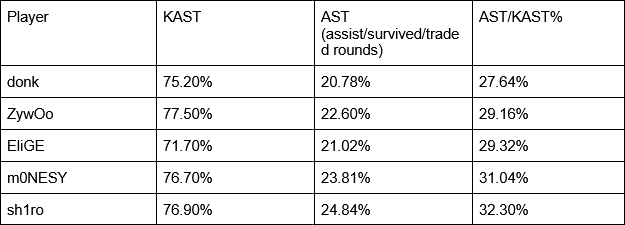
Now it would also be one thing if flameZ had a disproportionately high amount of damage, maybe then you could justify that percentage due to a high number of assists. However, among all of the riflers in the top 30, he had the lowest ADR among them on LAN vs Top 20.
To be fair to flameZ, he has always been traded at a high rate, even going back to when he was on OG. But that doesn’t change the fact that his rating is disproportionately raised via the contributions of his teammates, and if the goal of a top 20 list is to evaluate individuals, this is an oversight.
But if we’re completely honest, KAST is just part of the reason he’s rated so highly, and is not the reason he’s praised by pundits. flameZ is what we call an “impact” player with the idea being that his kills are some of the most impactful, and lead to more round wins than other players.
The Problems with Impact Rating
And that’s where Impact rating comes in. Among the Top 30 on LAN v Top 20 flameZ was 9th, and had more rounds played than five of the players above him. By Impact Rating, he is one of the most “impactful” players in the world. But this raises the question, is Impact Rating good?
Well firstly, we need to know what Impact Rating is. While the exact calculation is secret, the HLTV graphic referenced earlier reveals that it takes into account Opening Kills, Multikills, Clutches, and Rounds with Multiple Assists.
Well then let’s do what we did with KAST and go through these four factors to see if they fit our original definition.
We can go ahead and get a couple of these out of the way quickly. “Rounds with Multiple Assists” has the same issue as any other assist, getting multiple in one round doesn’t change the problem assists have fundamentally.
Meanwhile, clutches fully fit our definition. Clutches are, by definition, individual. You have to be alone to win a clutch. They also count as contributions and are valuable, because a clutch is a guaranteed round win.
To be fair to flameZ he is a very good clutcher. His 1v1 win rate was nearly 2 to 1 and he won a total of 45 clutches vs Top 20 opponents on LAN. So that aspect of his impact rating is justified.
Multikills, on the other hand, I actually wrote about already around a year ago. I recommend reading that article but if you can’t be bothered to read an additional 3000 words then I understand.
The TL;DR is that KPR over rates multikills because every additional kill you get in a round offers diminishing returns on your chances to win a round, at least without knowing any other context. This doesn’t mean that multikills are bad, it just means that if you have two players with the same KPR, the player with more rounds with a kill is the more valuable player.
This doesn’t really matter for flameZ, in terms of the Top 30 he’s 26th in KPR, Multikill%, and 28th in Round w/Kill%.
However what influences impact rating the most and what is most prevalent for flameZ are Opening Kills. He is one of the top players for opening attempts and opening kills in general. His role is the entire reason he’s touted so highly, he may not get a lot of kills but a high percentage of those kills are openings and are thus valued greater than other kills.
But, should they be?
That sounds like a ridiculous question on the surface but only because nobody has really considered the notion, but there’s an uncomfortable truth we might have to face.
Opening the Opening Kill Pandora's Box
Over the past year with the oncoming of CS2 and the rise of donk, there’s been this sort of ‘infatuation’ with opening kills that wasn’t really around in CS:GO.
And initially it seems it is entirely justified. If you go to a player’s HLTV stats page and hover over the question mark next to “Opening”, it presents with you with this blurb:
“Opening: How likely a player is to make the difference with an early-round opening frag. Given that pros win 5v4s more than 70% of the time on average, aggression is a skillset every team needs. The score is based on opening kills per round, and opening attempts.”
This paragraph is 100% accurate, nothing said here is wrong. So how can opening kills be overrated when 5v4s are won roughly 70% of the time? The problem here is that we need to be asking ourselves what we should compare this number to.
Your initial inkling might be to compare that to a round’s neutral state, i.e. the average round win rate (50%). If you do, then an opening kill looks like a 20% swing, and it is! But that doesn’t really make sense to do because that’s not telling you how valuable an opening kill is compared to any other kill.
What we should be doing is comparing opening kills to all kills to see how “valuable” opening kills are. So then, we (roughly) know the win rate of opening kills, but what’s the win rate of kills in general?
Well, last year I looked at two events after the midyear player break, BLAST Fall Groups and EWC. Here are both the 5v4% and Kill Win% for both events.
The kill win rate was also consistent (69.40%) at the Copenhagen RMRs; the 5v4% was not collected.
So instead of a 20% swing as initially presented, we’re instead looking at a swing of a few percentage points when compared to all kills. But rather than just take this number at face value we need to be able to understand if this actually makes sense and further demonstrate that it does.
Let’s conceptualize Counter Strike on an abstract level. Every round of CS has 36 potential game states. These can be represented by this table:
Every border between these cells represents a change in the game state, i.e. a kill or death.
Now let’s ask ourselves, what kills here have the highest win rates for Team A? This isn’t supposed to be a trick question, it’s the kills at the bottom of the table, the ones that bring the game from an X v 1 to an X v 0. When you get that kill you’re going to be winning that round 99% of the time (this isn’t a stat), as the only way you can lose those situations is by not defusing the bomb.
On the flip side, we can also say that the kills most likely to be losses are ones when you are in clutch scenarios, from 1 v x to 0 v x situations. All of this is to say that the kills most likely to win rounds are when your team has the biggest advantage, and the kills most likely to come in losses are when your team has the biggest disadvantage.
Another way to think about this concept is looking at all of the branches possible from a certain situation. If we refer back to our table, we can examine these different branches. Let’s compare a 5v1 to a 3v4.
For the sake of argument, the highlighted cells represent the scenarios of a round win and round loss. Obviously CS is more complicated than this but we’re thinking abstract here.
The primary difference in both tables is how many potential win states exist for both sides. In the 5v1, there are 5 win states and 1 lose state, in the 3v4 there are 3 win states and 4 lose states. We can define this difference between the number of winstates and losestates as well as the total amount of winstates to be defined as “certainty”.
If we illustrate this on our table, certainty increases along the axes stemming out from the 5v5 corner and kills are most certain at the far edges of the table.
However, it should also be obvious that while these kills result in round wins the most, they also *usually* have the lowest change in win probability, precisely because of their certainty. So which kills have the greatest change in win probability?
That’s where volatility comes in. If certainty is how likely a kill is to result in a round win, volatility is how much a single kill can change your team’s favorability in winning the round.
In other words, these are kills in near-even state scenarios. If we think back to our graph from a moment ago, volatility can be represented by an arrow that starts from the top left and increases as it moves to the bottom right. However it also decreases the more you deviate from this arrow towards the other corners.
It is also worth mentioning that certainty and volatility aren’t necessarily diametrically opposed. For instance, in a 1v1 the situation is volatile and the next kill (almost always) guarantees the round win.
I think this idea is best illustrated by “btrams” (@smartbackwards on Twitter) and his work on both the clawback/bozo and breakthrough metrics. He defines each of these concepts as follows:
Clawback kills: A kill in a man disadvantage that brings the round to an even state (i.e. a kill in a 3v4 that makes it a 3v3)
Bozo deaths: A death in a man advantage situation that brings the round to an even state (i.e. a death in a 4v3 that makes it a 3v3)
Breakthrough kills: A kill in an even round state that gives your team a man advantage (i.e a kill in a 4v4 that makes it a 4v3)
Breakthrough death: A death in an even round state that puts your team in a man disadvantage (i.e. a death in a 4v4 that makes it a 3v4)
These encapsulate high volatility kills, as they all change the favorability of a round by changing the round-state to either an advantage, an even-state, or a disadvantage.
If we combine both of these aspects we can examine why that win rate for opening kills makes sense. While 5v4s fall within our bounds of volatile kills, they are some of the least volatile kills of that group as these kills are also the kills with the least certainty in a round.
Another way to think about that is that 5v4s are the smallest possible advantage you can possibly have in a round. You would much rather have either a bigger numbers advantage (like a 5v3, 5v2, etc.) or an advantage in a later round situation (like a 4v3, 3v2, etc.)
It does make sense that 5v4s have a higher win rate because they do give an advantage and kills that result in an advantage will naturally have higher win rates, but it also makes sense that they aren’t massively higher than normal kills because the advantage they give is the smallest possible advantage.
Another reason this makes sense is if we look at the distribution of how many players are alive at the end of every round. Once again using the sample from EWC and BLAST Fall Groups, we can look at how many rounds, out of 2283, ended with however many players alive from 10 to 0.
Looking at the graph, you might notice that there are three distinct sections in the graph you can chart. Rounds that end with four or less total deaths all have occurrence rates lower than three percent, and collectively they encompass a little more than 7% of rounds total.
Then from 5+ deaths, you have double digit percentage occurrences that continue to climb until you reach seven, which is the median for these rounds. This is to say that half of all rounds of CS end with 7 or less deaths and the other half end with 7 or more deaths.
Lastly, you have occurrences that end with 8 or more deaths, where they naturally taper off until they end with just two occurrences of 10 total deaths in our sample. In all we can describe these states of the game as the “Early Round”, “Mid Round”, and “Late Round”.
Now the terms early round, mid round, and late round are usually used differently in CS, mainly referring to the starting default strat and opening exchanges, the portion encompassing the final site hit, and the post plant/retake stages, but these death guidelines should also roughly follow that formula as well.
But what about in practice?
Hopefully it’s obvious why the notion that the first kill decides a round is a little misleading. Over 90% of rounds require at least four kills before they are even decided, and over half require at least seven.
To further drive home this point, let’s compare teams and their win rates last year vs their opening rates. There were 19 teams last year that played at least 30 maps at Big Events, these are their round win rates vs their opening kill win rates. The x axis is their round win rate and the y axis is their opening kill rate.
The team labels are left off so you can guess which dot is which team. The full list of teams is Vitality, Spirit, MOUZ, G2, Na’Vi, Astralis, The MongolZ, FaZe, HEROIC, Liquid, Eternal Fire, BIG, M80, Virtus.pro, Complexity, Falcons, FURIA, paiN, and FlyQuest.
Without the names you can see that there is a weak correlation (R2 of 0.2614) between opening kill rate and round win rate. This tracks with what we examined earlier between opening kill rates and the win rate of all kills, opening kills should still win more often than not, but they aren’t overwhelming round deciders. Here is the previous graph with dots labelled.
When looking at this graph, the most mind boggling example is MOUZ, who carried the 3rd highest round win rate at big events in 2024 while simultaneously having the fifth worst opening kill rate. Another notable example is FaZe, who carried an opening kill rate that was fourth worst throughout the year and during both majors they made the finals of, they also had below average opening kill rates (48.5% in Copenhagen, 46.5% in Shanghai).
Of course, there are also plenty of examples of teams that maintained high win rates with high opening rates and vice versa. What’s important is the entire sample and the general trends. Such as the fact that only five teams out of these 19 had lower round win rates than opening kill rates, further lending to the idea that openings aren’t all that they’re made out to be.
Okay, so what?
This is all to say that opening kills are being overrated. That’s not to say they’re bad, they just shouldn’t be as rated as highly as they currently are.
The real problem too isn’t just that opening kills are so emphasized, it’s the lack of even recognizing other types of kills that have more weight than openings that really punishes some players in comparison.
As stated earlier, any even state kill is more “impactful” when there are less players alive. That is to say a kill in a 4v4 is more impactful than a kill in a 5v5, and a kill in a 3v3 is more impactful than a kill in a 4v4.
Despite this being true, these specific kills are not tracked (for now). Btrams has done some of the legwork with his highlighting of even state kills, but the undeniable fact that some of these kills are more valuable isn’t highlighted or even mentioned.
Right now in HLTV Rating, the hierarchy of the “value” of individual kills is basically as follows:
Opening Kills
Everything else
And for how little HLTV Rating tracks, this number is parroted so much, it’s become CS nomenclature. Every discussion around a player has to do with how they are “rated” (and for people that don’t follow other sports, this phraseology doesn’t exist in other sports, at least to the same extent.)
It’s a testament to how far we have to go as a community. Counter Strike, compared to other sports, is very complicated. One time I was watching the Antwerp major with some friends, some of which weren’t familiar with the game. While watching one of them made a comment that really stuck out to me.
He pointed out just how much information is on the screen. If you’re a regular CS viewer, you might be numb to this, but there’s the minimap, every scoreline for every player, their economy, their equipment, the map picks, and player cams.
Most other sports only have the score of the game, the time left, and the game state, which is basically only the top middle of the screen in CS. Think about if we only watched CS that way how much different the game would feel.
And despite all of that extra information we deem required to watch the game, we still look at just a single number after it.
Yeah, but what about flameZ?
You do remember this is about flameZ, right?
Well as stated, he has a very high opening attempt rate. Across HLTV’s Top 10 teams last year among those who played the whole year, he had the 6th highest opening attempt rate and was nearly 30% above average in attempts.
But those attempts actually hurt his “true” value, because his low output combined with his high opening attempts means he is getting a higher amount of openings as his kills than other players, but that also means less of his kills are going to come later in the round when rounds are decided.
It would be hard for me to not talk about entry fragging as a role, because all of these arguments don’t just lend to the fact flameZ is overrated, but that the entry-fragging/opening role is overrated, which is accurate.
For instance, how do you account for the fact that most team’s opening success rate increases when you remove their opener’s entry stats? Or the fact that their success rate in general is basically neutral? If an opening death is as costly as an opening kill is worth, and a player’s opening success rate is 50%, which is the case for flameZ, how can that player be anything but neutral?
Then it goes back to talking about trading, which is most definitely a good thing, but we already presented the question of if that value is value that should be rewarded to the entry because trading is fundamentally reliant on other people, and if we’re trying to rate *individual* players, including trading directly counters that purpose.
Surely though, openers should have some inflation or adjustment to their rating to account for the fact that opening is harder than other roles. But then again, does that make sense if the role is just less valuable than other roles?
Because that’s what Leetify rating indirectly claims, that there’s a hierarchy of roles and the most important role on a team is the AWPer, then your late-round riflers, then your early-round riflers.
And if it is the case that riflers who predominantly occupy presence in the beginning of the round are the least important, shouldn’t it be your worst player taking that engagement? Because if the opening kill is the smallest advantage, the opening death is also the smallest disadvantage.
Team’s don’t really operate this way but everyone bemoans watching G2 with Snax in a clutch scenario while malbsMd has already been dead for a minute and a half. Wouldn’t it just make more sense if the roles were reversed?
And I don’t think it’s a coincidence that karrigan and rain both had the highest opening attempt rates on FaZe last year and they were one of the few elite teams with a subpar opening success rate. Meanwhile MOUZ were the other team with the same case, and they just so happen to have the second highest rated rifler by Leetify rating last year.
On the flip side, Complexity’s best player was EliGE who propelled them to an opening kill rate of 51.2%, but then you had Grim and floppy closing rounds which is why they ended up with the biggest differential between opening kill rate and round win rate and the third lowest round win rate overall among the 19 teams from earlier.
This all circles back to flameZ. Would flameZ be seen as nearly as valuable if he wasn’t on Vitality, a team where he had ZywOo, Spinx, and now ropz to close the rounds he starts? Because funny enough if you look at flameZ’s stats on OG vs his stats on Vitality, a lot of the numbers haven’t really changed, but he’s gone from not even sniffing or being considered for the Top 20 to being ranked 7th in the world.
There is something to be said about his consistency, it’s uncanny how little he has changed as a player between both teams. The only thing that changed was the team he’s on and now he’s suddenly seen as a top 5 rifler in the world when nobody would even consider that notion when he was on OG.
Let’s get it straight, he wasn’t dragging OG to deep runs, the best results they ever made were topping their group at BLAST Spring Finals and BLAST World Finals in 2022, but outside of BLAST they didn’t do anything. Was anyone saying he was a top 5 rifler in the world then?
flameZ has never been a player that transcends his team, he’s a role player, an extremely good role player that does his job, but he’s not carrying your team like other great riflers have. And so I have a hard time thinking of him as a top 5 rifler in the world, even if his rating says otherwise.
TL;DR
Obviously this is over 7,000 words long and honestly if you read the whole thing you deserve a medal. If you clicked on this and scrolled here I don’t blame you, I still appreciate you clicking so I will sum up my main arguments.
flameZ is overrated because the function of HLTV Rating overrates him compared to other individuals, especially when compared to Leetify Rating. Out of the Top 30 players last year, flameZ had the highest percentage of his KAST based on the contributions of his teammates, not his individual contributions. Meanwhile Impact rating overrates multi kills and opening kills compared to their true round winning impact.
If you’re interested in the overall arguments about rating, the flaws of both Leetify rating and HLTV Rating, then I recommend reading those sections as it delves into the philosophical idea of what a rating and individual evaluation should be.
Afterword
Yeah this is longer than my last two articles combined. That’s not why it took a couple months, I’m kinda just busy and lazy, but I did put a lot of time into this. It doesn’t help that Vitality is the #1 team this year and they look poised for an era, but I guess that just makes this take more spicy.
I don’t expect anyone to agree with all of what I say here, but hopefully my point of view might make you rethink how you view rating and Counter Strike as a whole, which is ultimately my goal. I don’t want what I say to end conversations, I want to start conversations and learn where I’m wrong. At the end of the day I’m just a guy in my room typing what I think.
As for future articles, I still expect to write my article about the 2024 aim data I collected from Leetify. Long term I’d like to host my articles on a separate website and create my own rating systems and metrics and if any of that intrigues you then follow me here on Substack and on Twitter @n0miun.
And having said all that, thank you for reading, I hope you have a good day.


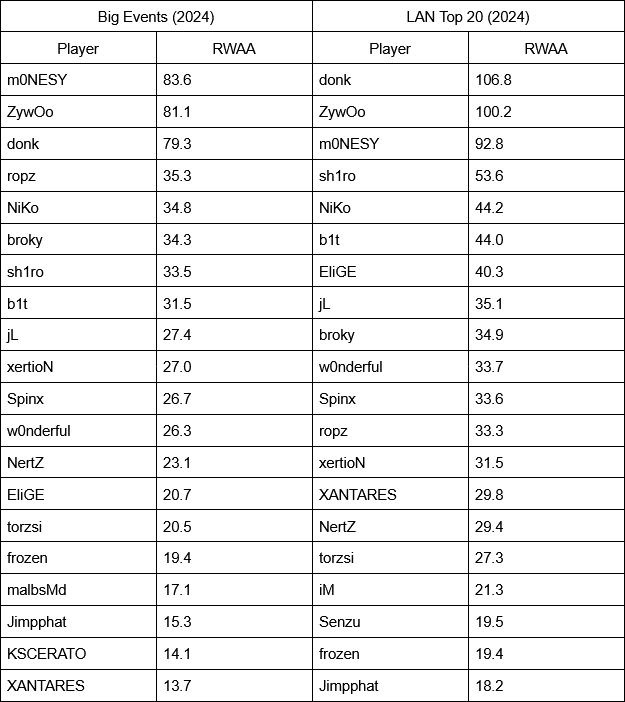
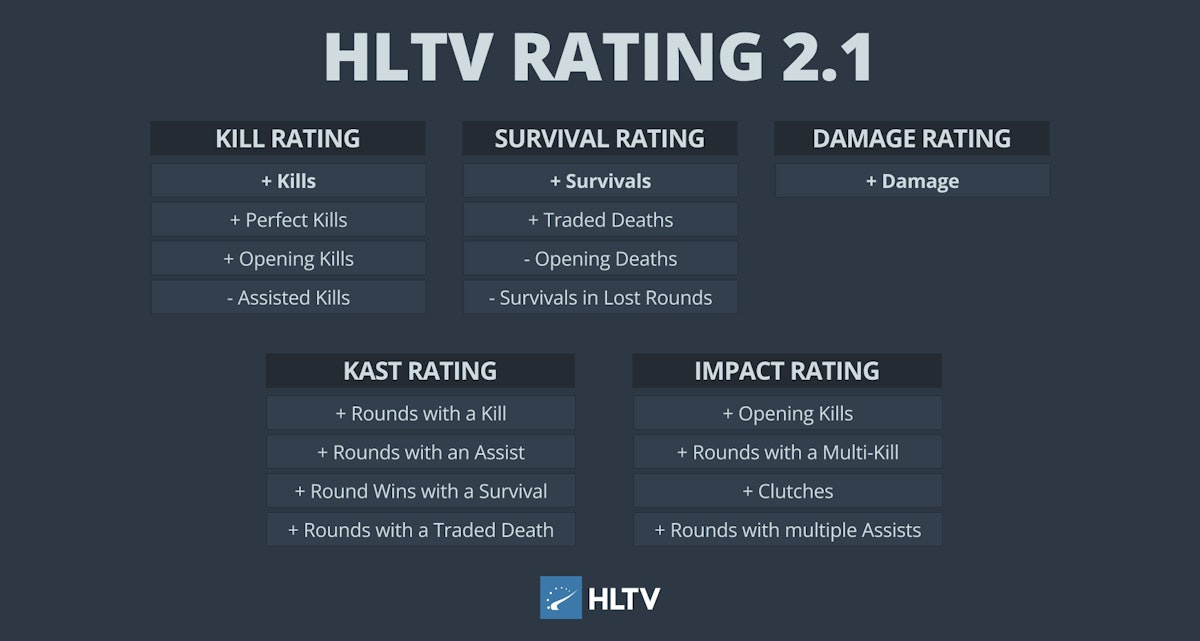
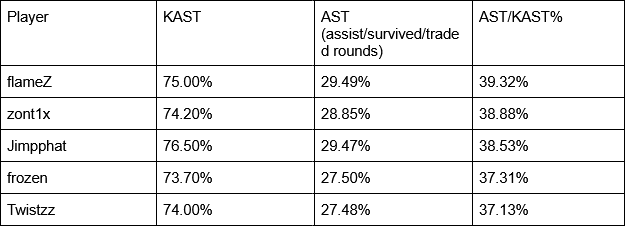


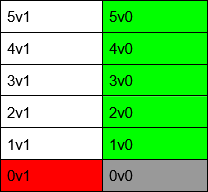



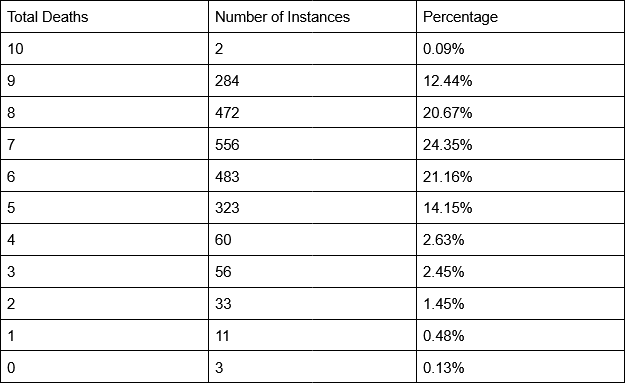

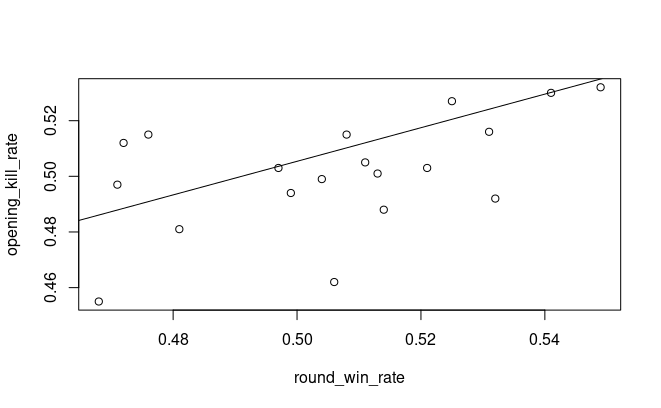
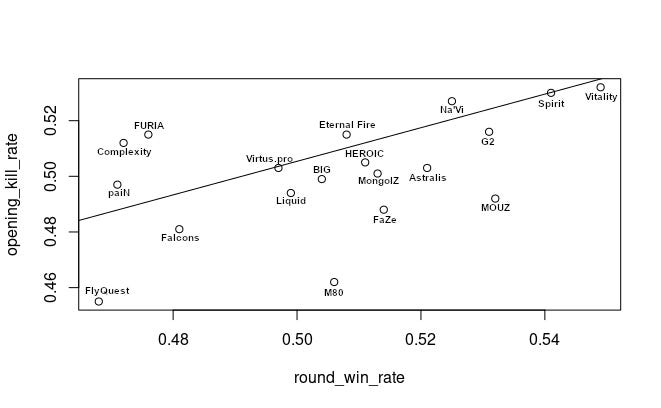
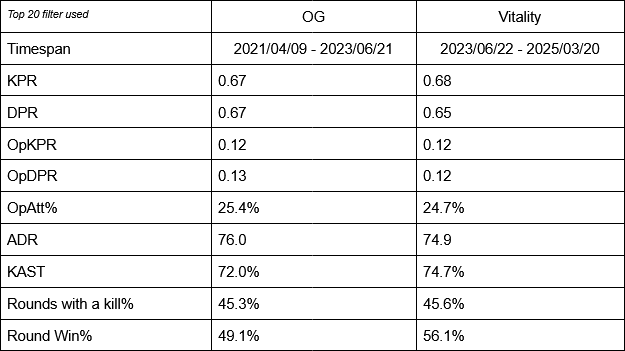
thank you for your hard work.
i enjoyed reading this
(i read your "which cs pros have the best aim" and "how much is a kill worth" articles? as well)
really intresting stuff, i didnt consider your point of view on opening kills before as i never thought about it, but it does make sense.
again thank you for the fun read.
mark it as leetify #ad next time